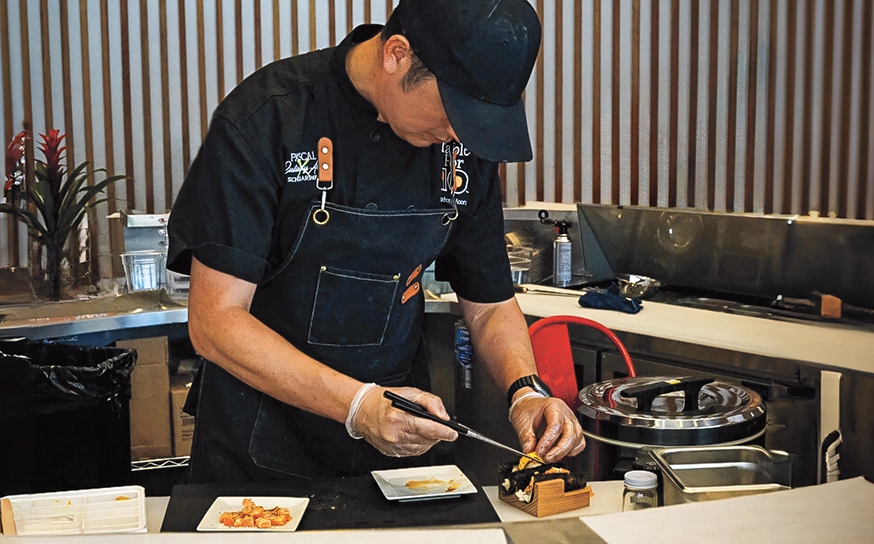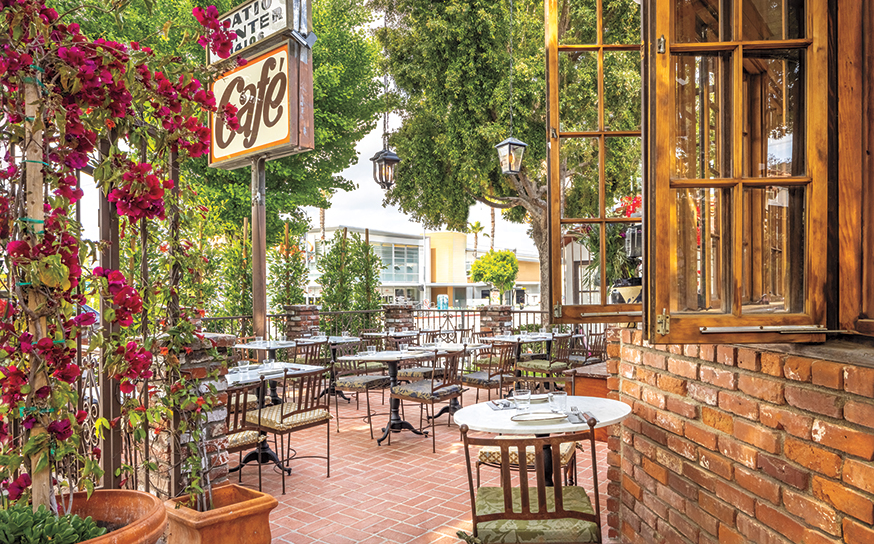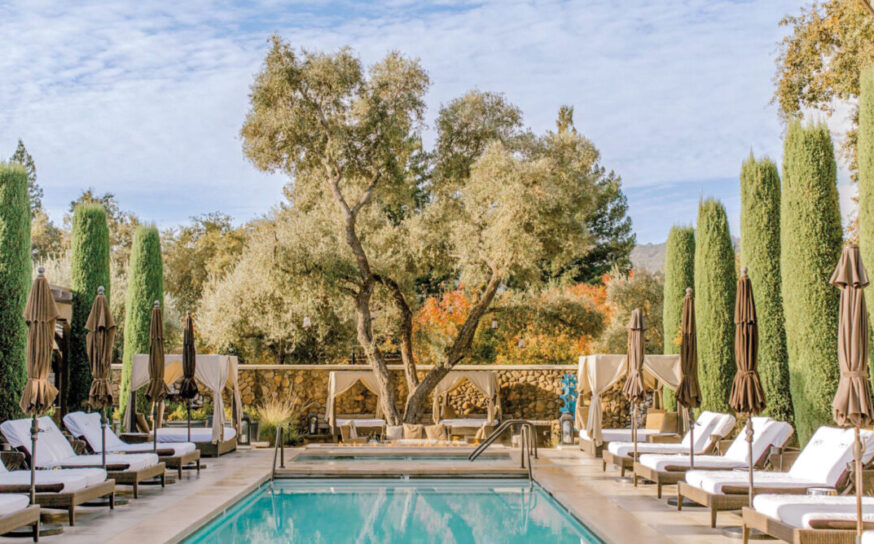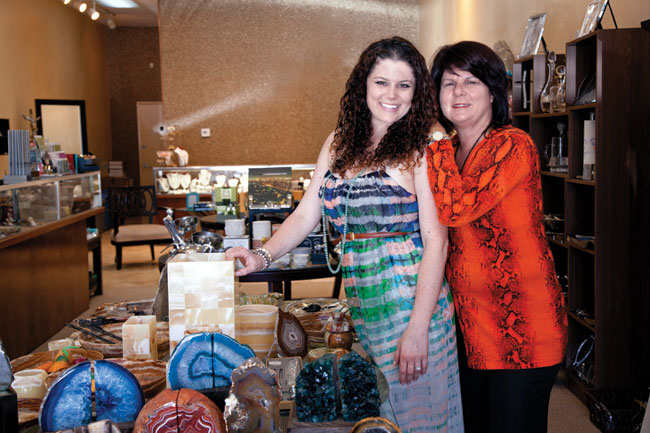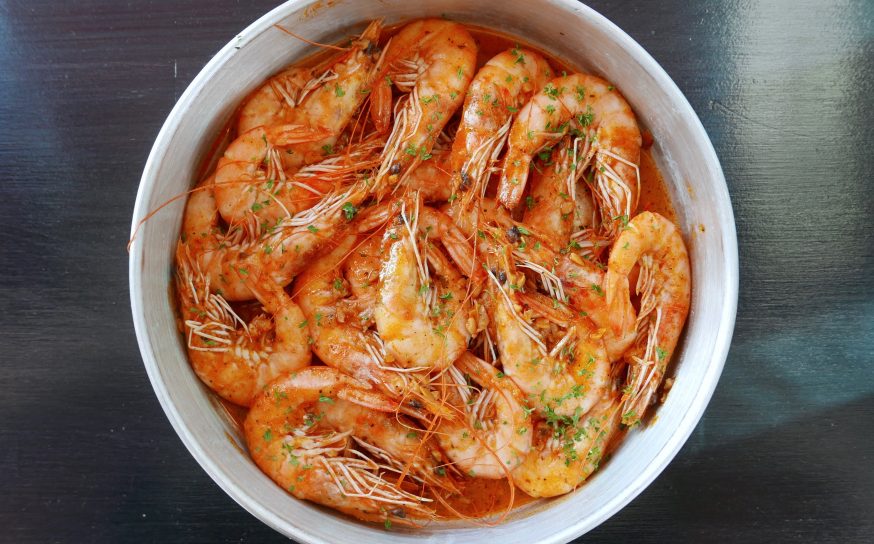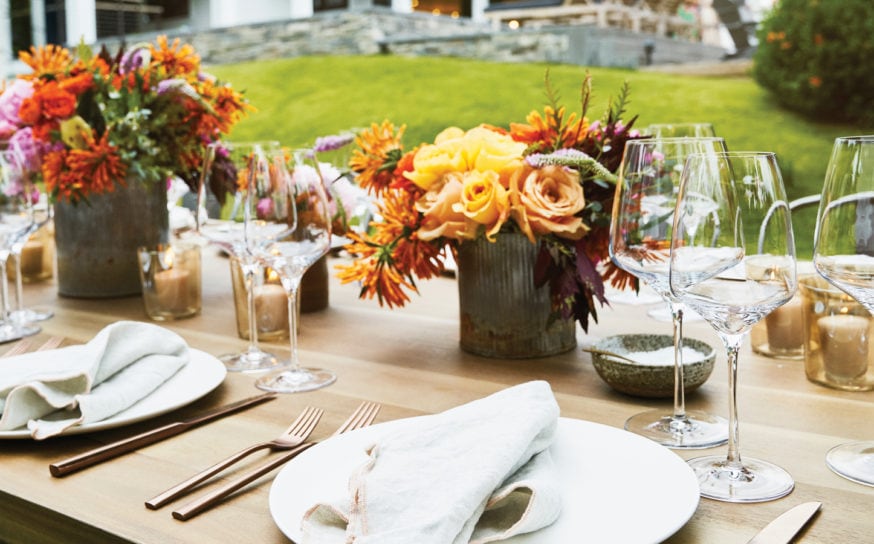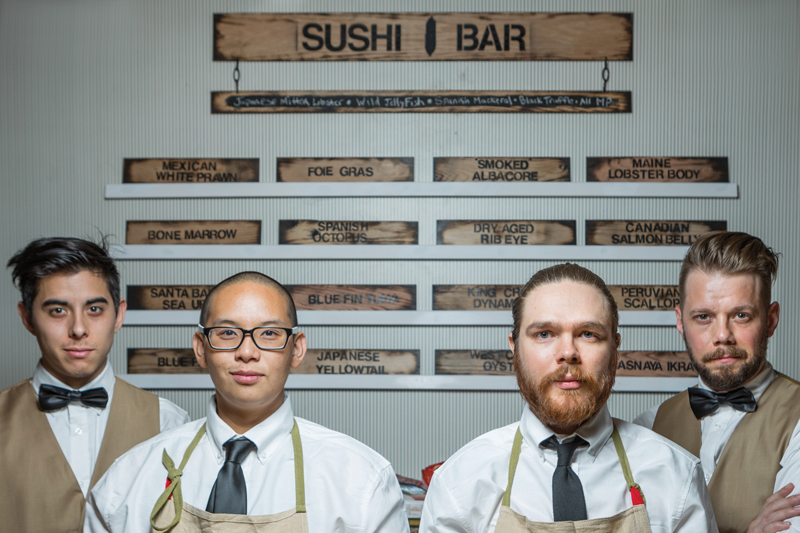
A Speakeasy for Sushi
Phillip Frankland Lee has turned the old formula inside out, hiding an inventive sushi counter behind a secret door in his Encino bar, Woodley Proper.
-
CategoryEat & Drink
-
WRITTEN BYMICHALENE BUSICO
-
PHOTOGRAPHED BYJAKOB LAYMAN
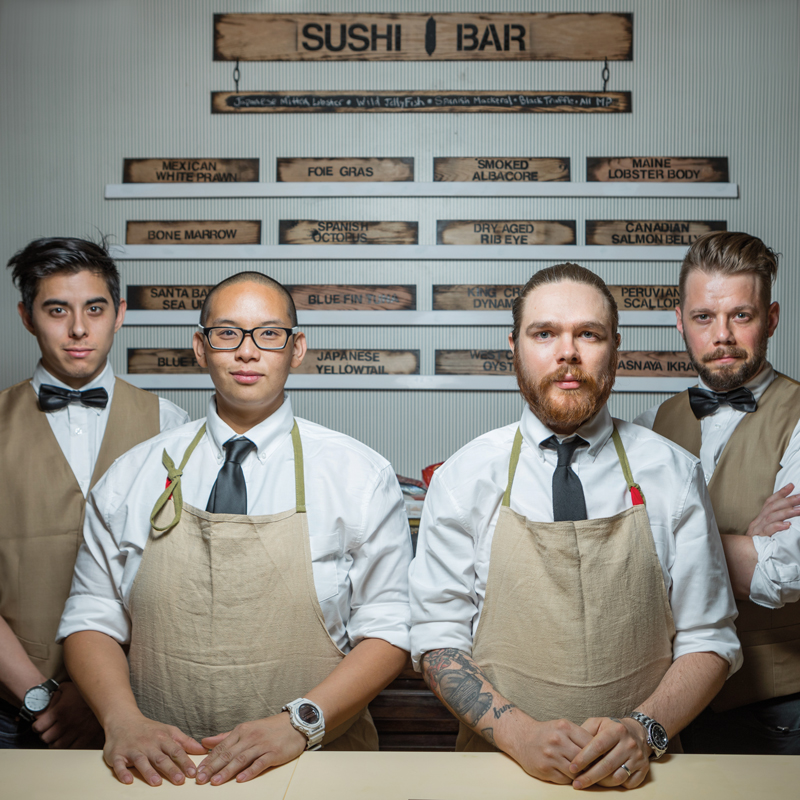
You can’t make a reservation at Phillip Frankland Lee’s new restaurant. You won’t find it by looking for a sign. And, even though it’s there, you won’t see it when you enter his Encino bar, Woodley Proper. To reserve a seat, you’ll need to write your name on a wooden plank hanging in a small hallway and make a $50 deposit, which will be applied toward your dinner. When it’s time to dine—there are three seatings a night at precisely 5, 7 and 9 p.m.—be ready to roll. If you’re five minutes late, you won’t be allowed in. Survive that gauntlet, and you’ll be escorted through a bright dishwashing room and into a small candlelit space, filled with 1930s Japanese jazz and an eight-seat sushi counter.
“Now, hopefully, you’re open to what I’m about to give you,” Phillip says of the disorienting introduction to his restaurant, which is simply named Sushi|Bar. “If you just walked in right off Ventura Boulevard, you would be like, ‘Where’s my California roll?’”
Sushi is what I grew up on, eating three meals a week if not more, my entire life,” he says. “My first job in a restaurant was in a sushi bar. Here, I want to take something I love and bring a little of my heritage to it.”
There is nothing so familiar in Phillip’s 16-course, $110 omakase menu. The meal opens with a raw oyster embellished with caviar and sake foam and progresses through a series of mostly one-bite courses that, for an additional $55, are paired with sake, craft cocktails and beer. The bearded 30-year-old chef calls Sushi|Bar his passion project, the restaurant he dreamed of opening since he was a kid in the Valley. “Sushi is what I grew up on, eating three meals a week if not more, my entire life,” he says. “My first job in a restaurant was in a sushi bar. Here, I want to take something I love and bring a little of my heritage to it.”
Each dish is fully composed; no soy sauce or wasabi is offered. Hamachi is brushed with a puree of sweet corn pudding and sprinkled with sourdough breadcrumbs and fresh wasabi. Albacore, too, avoids the usual preparation. “We’ve all had it a million times, seared with ponzu and crispy onions,” Phillip says. Instead he rubs the raw loin with garlic puree and tightly wraps it in sheets of nori that have been soaked in sake. After a quick toasting over hot coals, it is sliced and served with house-made ponzu, crisped onions and sliced scallions. The meal ends with two beef courses, including sushi made with warm roasted marrow. “It’s just rice, soy sauce and wasabi, the way you’d normally have sushi right here on the corner,” Phillip says. But replacing the seafood with marrow is a delicious surprise, putting the buttery marrow in high contrast with each grain of lightly vinegared rice.
All night, the eight diners are served by three chefs and a dedicated mixologist, Benjamin Schrader, behind the counter. Their work is supplemented by pastry chef Margarita Kallas-Lee, who creates desserts such as a charcoal mochi filled with toasted-rice ice cream. Phillip, whose career was kick-started after a season as a contestant on Top Chef, has clearly devoted enormous resources and energy to this tiny, ambitious and not-a-little perplexing project. When you’re reinventing sushi amid the sushi legends of the San Fernando Valley, there may be no other way.






